Cavern Hotel, Drakensberg.
With: Elsa Pooley and Gillian Condy. October 2017
Written by : Jenni Saunders
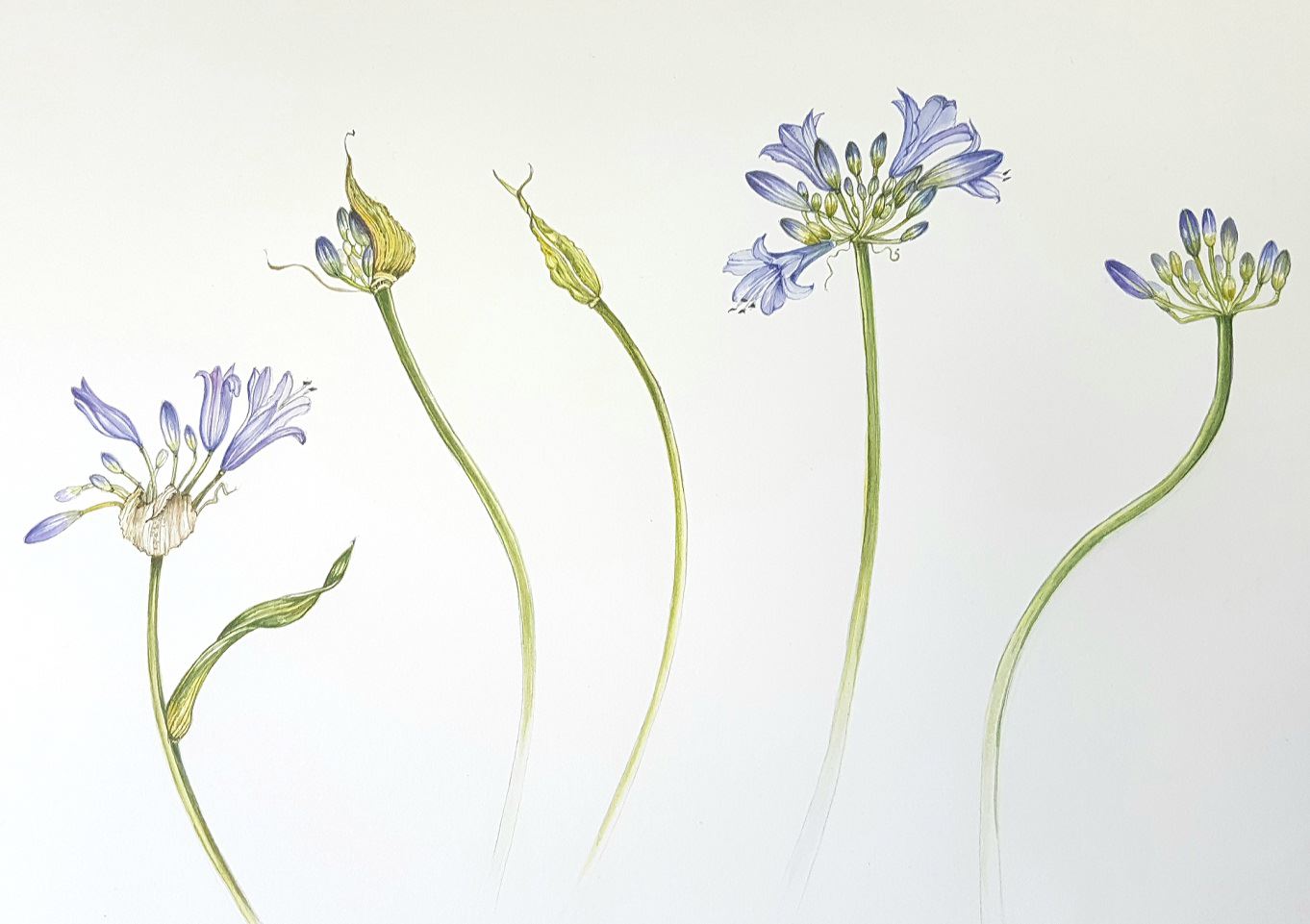
Turning 50 has some perks. You get gifts, and mine was six blissful days in the Drakensberg learning botanical art with legends Elsa Pooley and Gillian Condy. This was a dream come true, as a full time working mom, just the idea of a week with no demands and unadulterated creativity, was intoxicating! That, coupled with brushing shoulders with botanists and artists in my beloved Drakensberg was the perfect mix. I had been counting sleeps.
The Cavern Hotel in the Northern Drakensberg is steeped in history and built on a strong foundation of family. It is Run and owned by the Carte family who all still live on the property and personally manage the day to day operations. Driving up from Durban Airport, we were met by the new family puppy Gusto, cavorting on the lawns amongst a posse of little kids, and I was struck by the multi-generational families enjoying the swimming pool, bowls, and relaxing on the decks in happy groups. The gardens are gorgeous and soon became our resource for plant specimens.
Our group was made up of ten students of different ages, all from different parts of the country and one from America, and many had been on the same course multiple times. I was immediately intimidated knowing many were already accomplished artists. It was my first course, and I had no idea what to expect. The course is aimed at beginners and advanced artists, and Elsa and Gillian manage the needs of each very well.
What I didn’t realise is that botanical art is something of a science. It’s all about precision, accuracy and depicting the plant in order to fully recognize it. Our first day was spent choosing our plant subjects, and doing multiple sketches. Once we had done this, we did a more formal drawing that involved measuring every leaf and stem to ensure dimensions and perspective were correct. After this, we did a tonal drawing, which maps out the dark and light areas of the plant. This is for later when you are painting it, and your plant may no longer look the same.
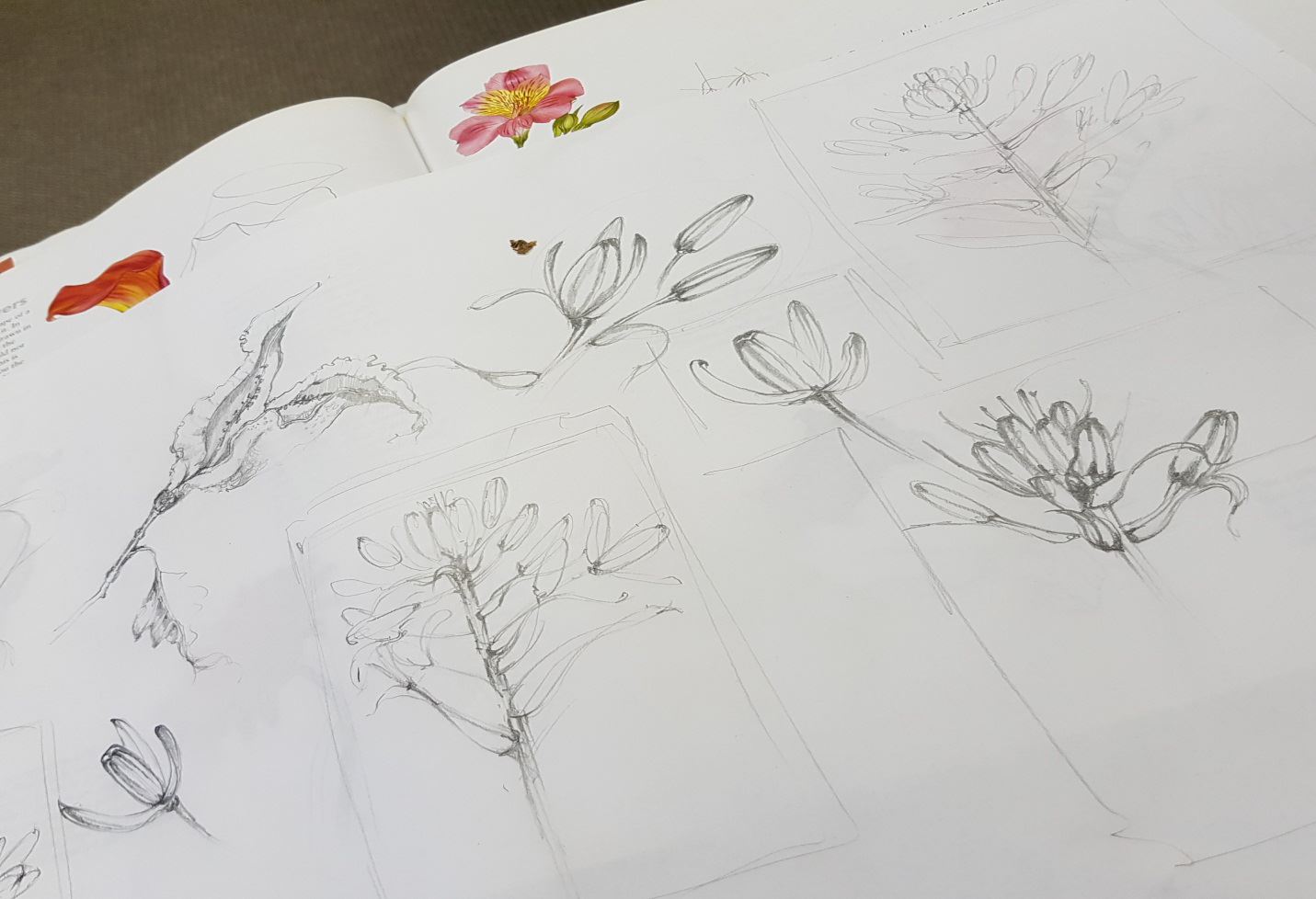
We then traced the drawing from the tracing paper using a light box on to the hot pressed watercolour paper. Learning about paper types was useful, as the watercolour paint behaves very differently on different surfaces. Because this paper doesn’t take well to erasers, you need to ensure your drawing goes on accurately to your final paper.
The next step was colour. We started with mixing different colours on a chart to ensure we got the correct mix of tones for our flower.
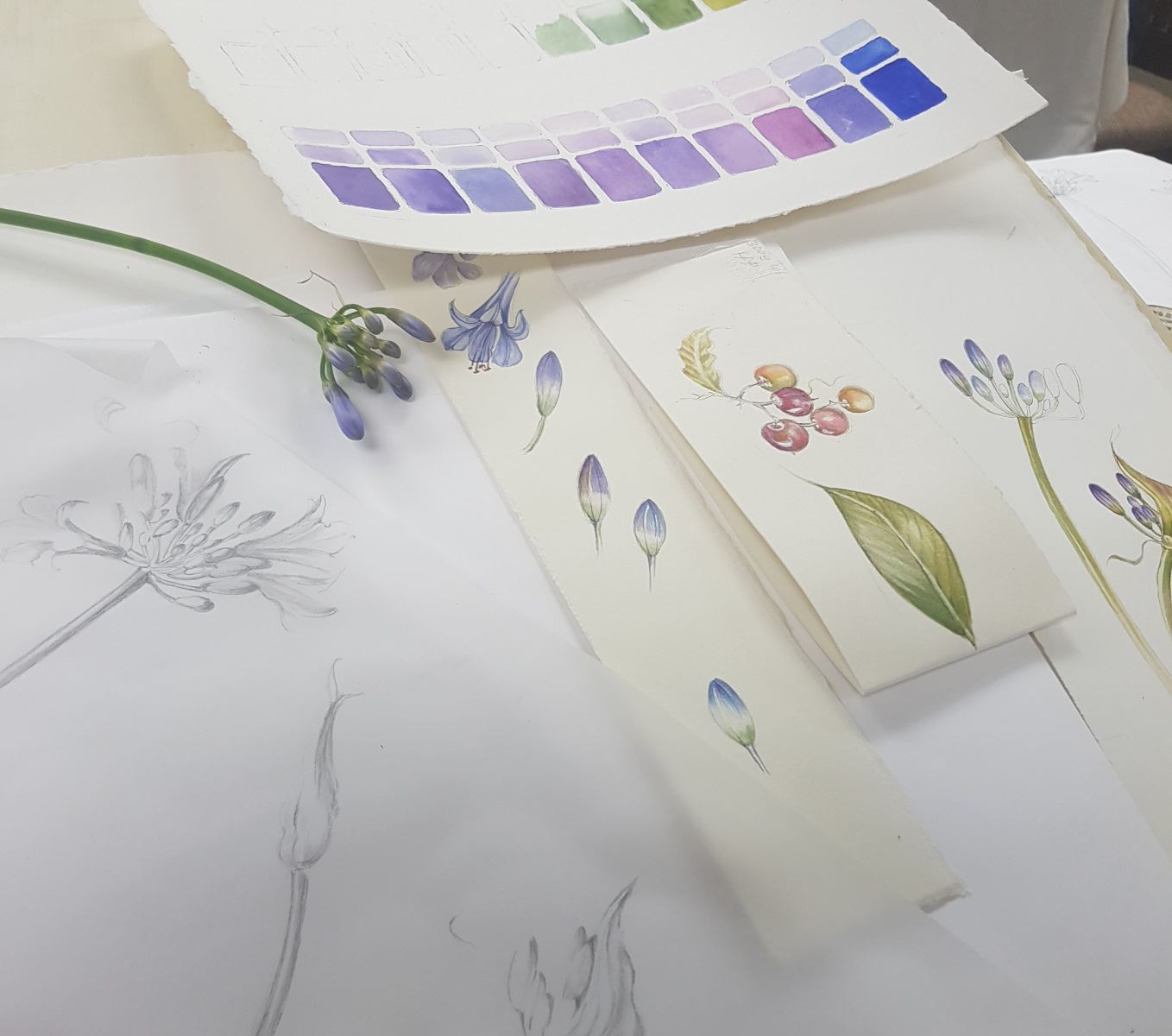
Our days were not all art. The mornings and evenings included a walk through the nearby hills in search of the wild flowers. Elsa with her encyclopedic knowledge of the local plant life lead these walks and we discovered wonderful fields of Scilia natalensis, and hillsides of proteas, as well as tiny forest floor species on the hotel’s marked Nature Trail. Interpretive signs and excellent guides make hiking around the hotel wonderful. Some people even found time to hike up to the bushmen painting caves and the mysterious ‘Silent Woman’.
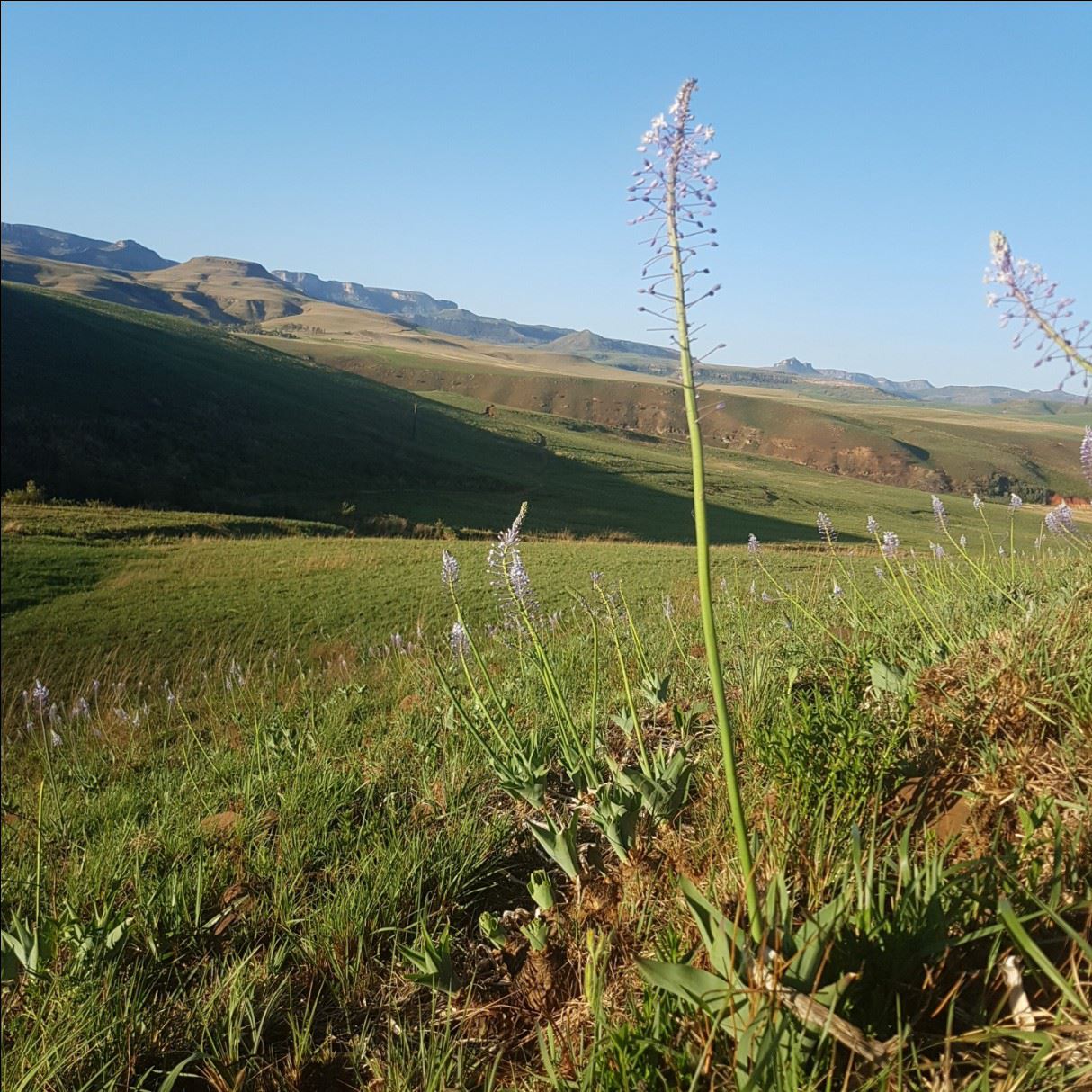
By day three we were all working hard on our plants of choice, and the weather turned from hot and humid to freezing almost overnight and we were happy to head down each morning after each breakfast to hibernate in our studio.
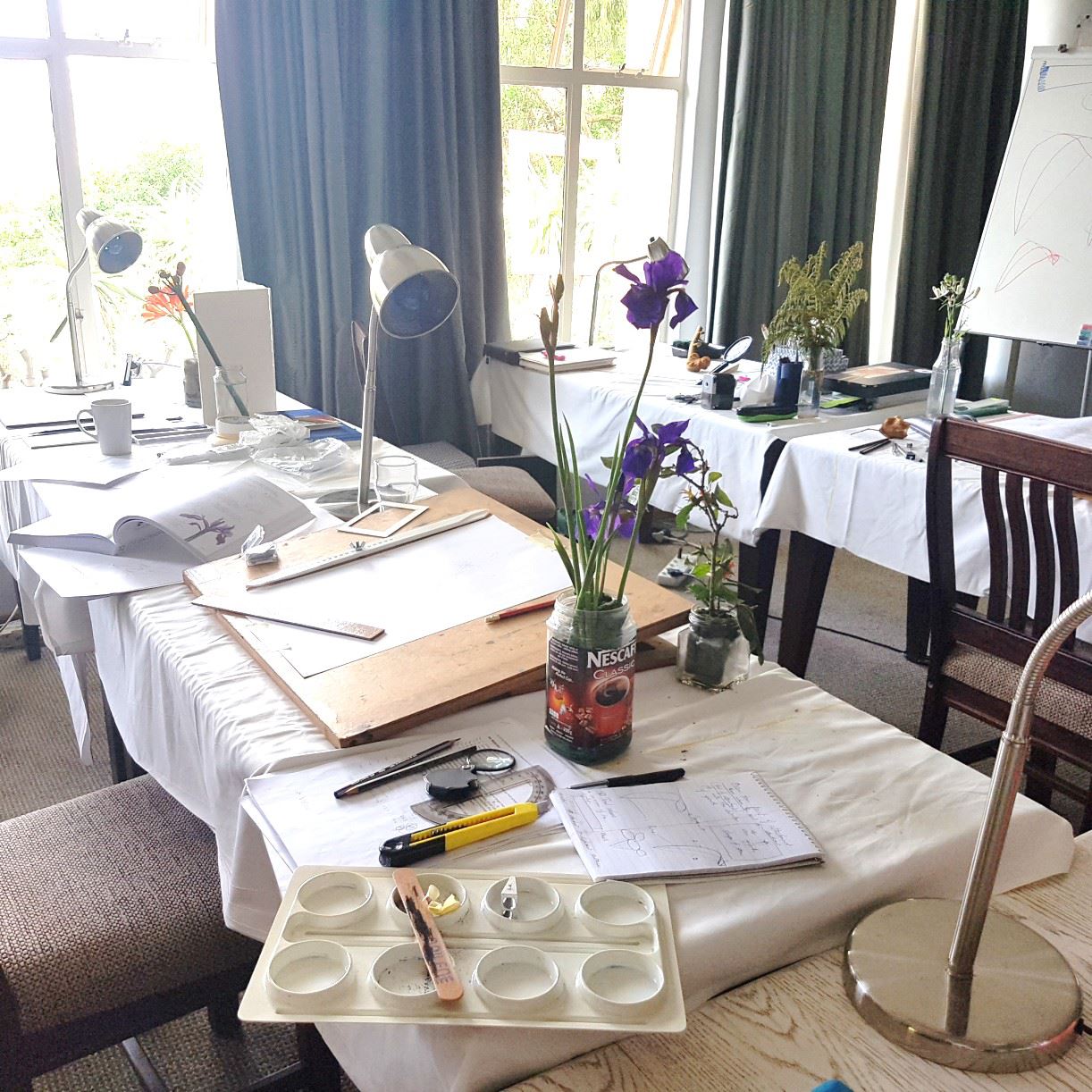
During the course Gillian and Elsa gave us ‘newbies’ guidance on simple lessons like painting a leaf accurately. Her patience and expertise were invaluable. Some of our group visited the spa in the afternoons, and most evenings Gillian showed a botanical art video in the lounge for the group. Dinners were a fun affair, as we enjoyed a long table with laughs, wine and amazing food. All in all, the pace of the workshop is set by each student, some preferring a holiday and leisure and some avidly learning and working long hours to finish their artworks for the final exhibition on the Saturday evening.
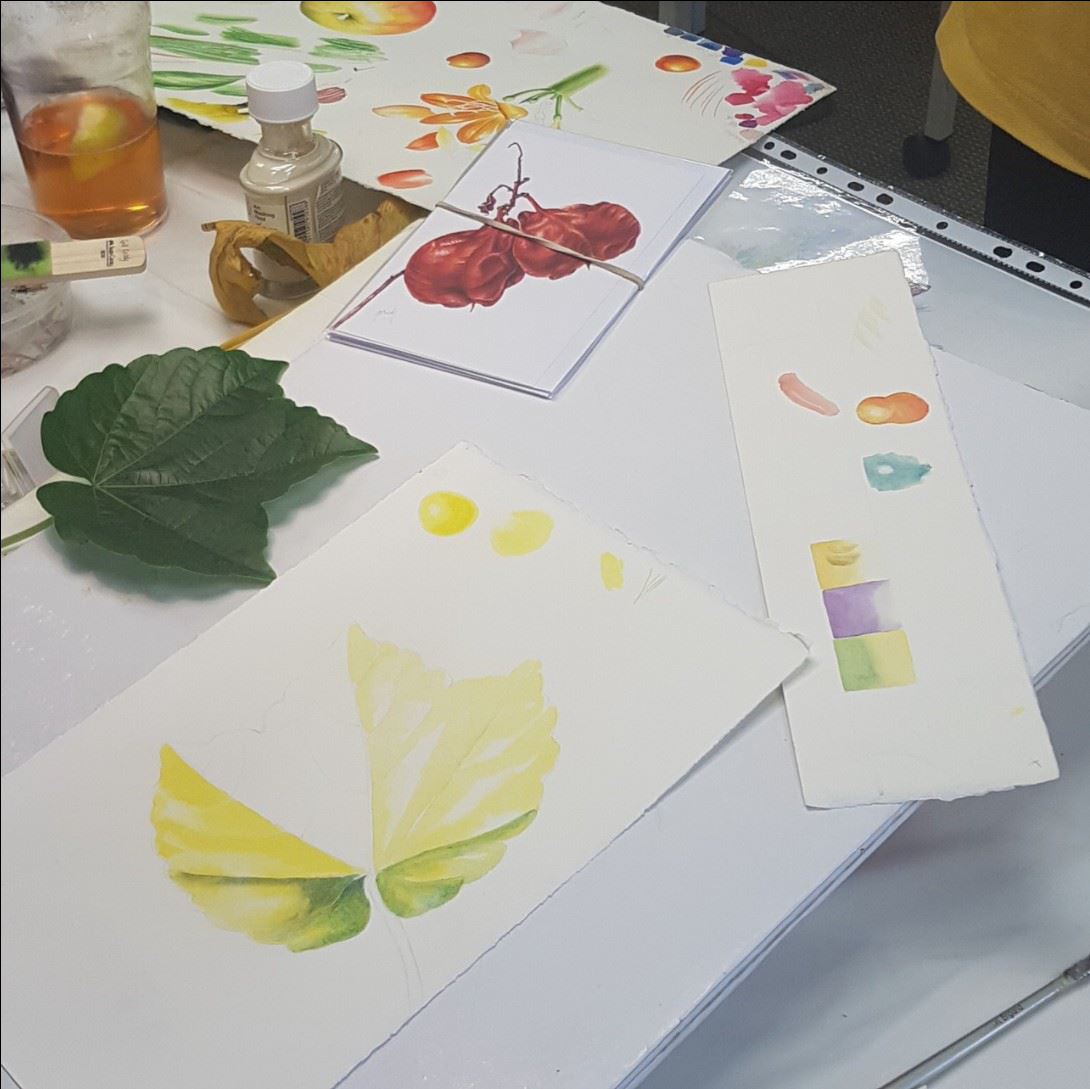
After six full days of this course I began to see my world around me, and certainly the plant world – with new eyes. I saw the detail, the texture, the lighting, the dimensions and tones like never before. I loved every tiny minute of being up there in those mountains, the warmth and hospitality of the hotel and my clan of botanical artists hard at work each day to reproduce some of the beauty we were discovering.
During my time there I thought so much of my ancestor: botanical artist Katherine Saunders who came out to South Africa in the mid 1800’s to settle in Natal, and dedicated much of her life to drawing, identifying and naming the plants of Natal. Sending her samples to Kew Gardens and working with the likes of legendary artist Marianne North, she made a name for herself as the mother of botanical art in this part of the country. My father , also an artist – lived and died in the Drakensberg area, and up there with the rivers that tumble to the lowlands and the herds of Eland that streamed past us – I felt close to my ancestors and my spirits soured.

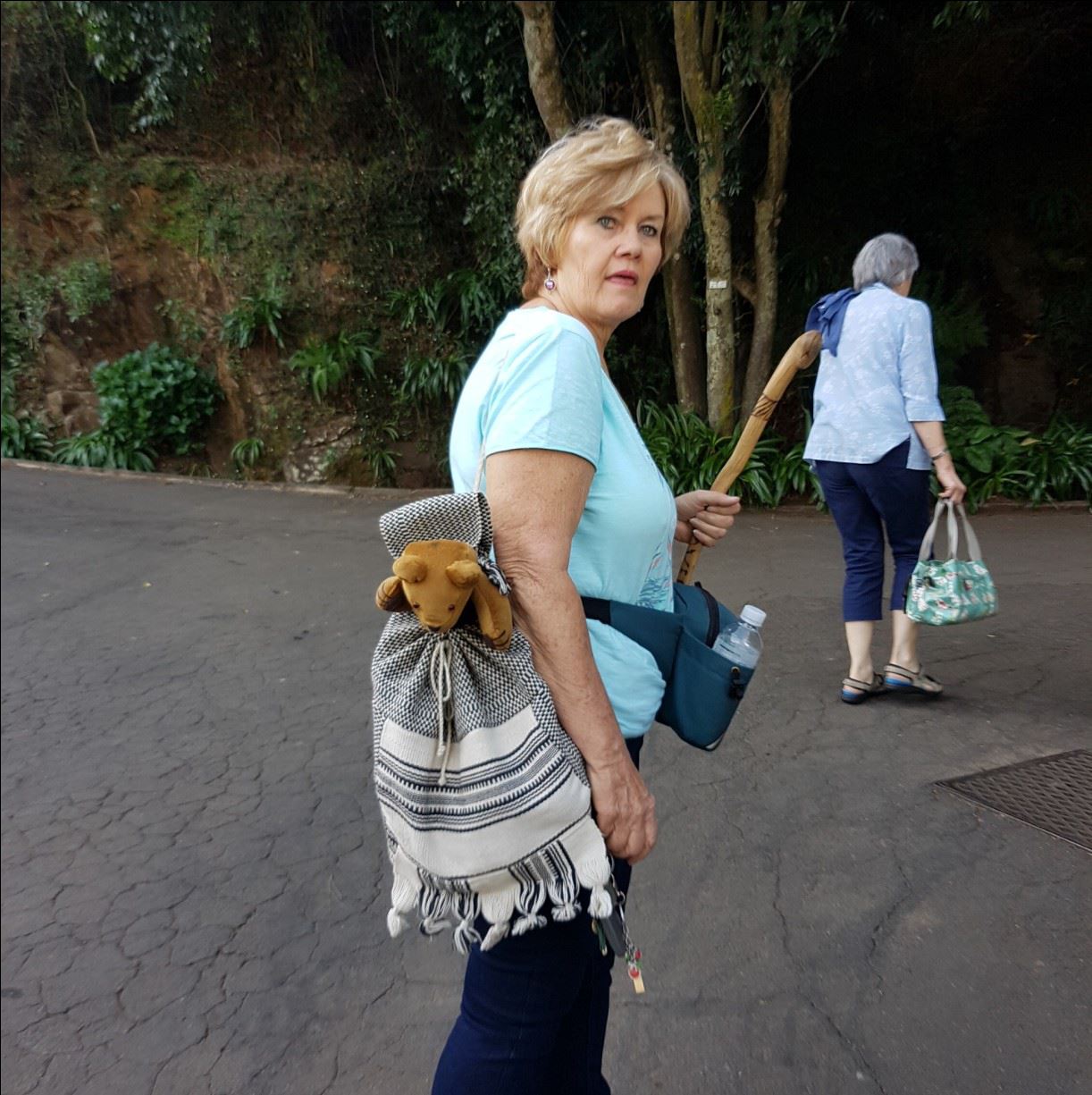
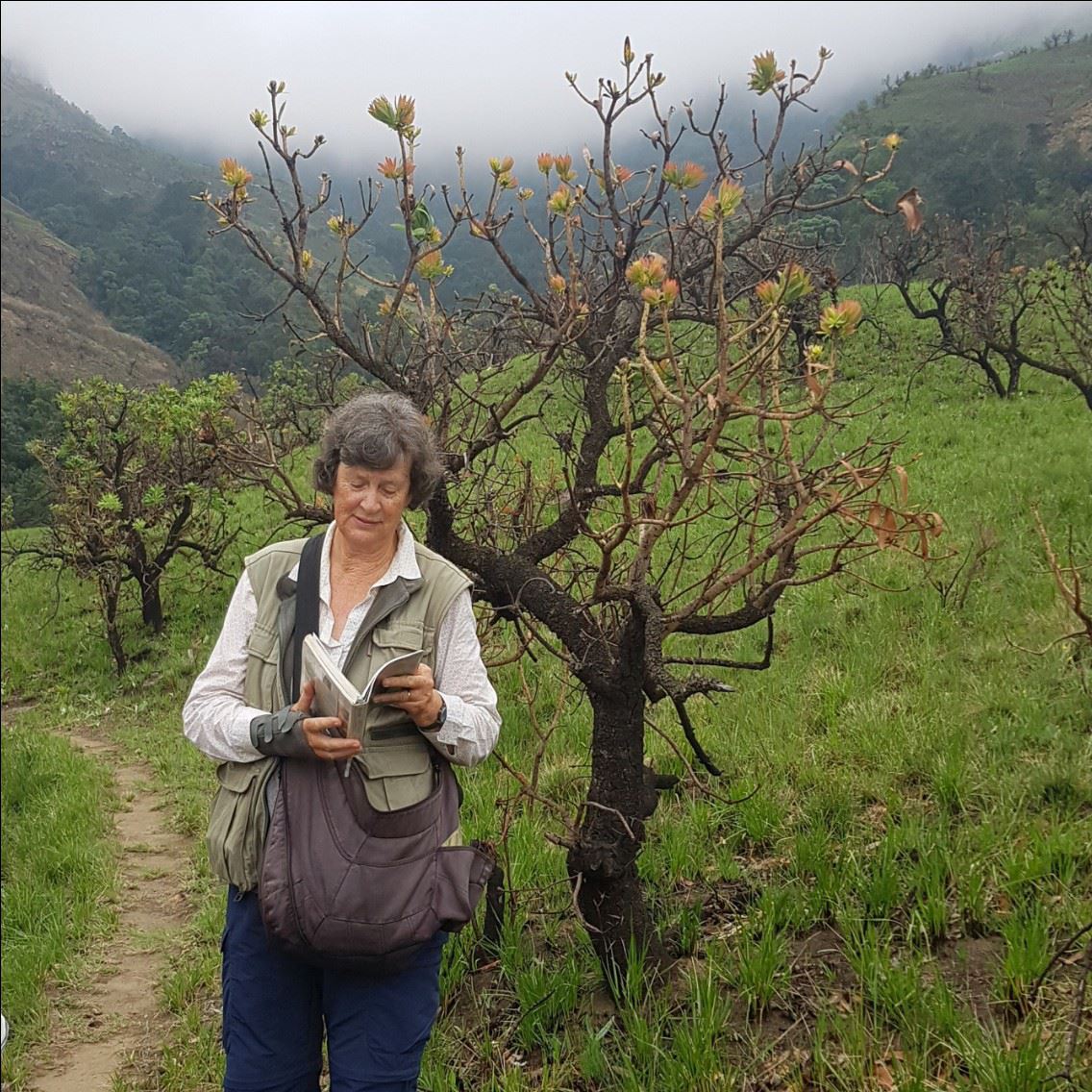
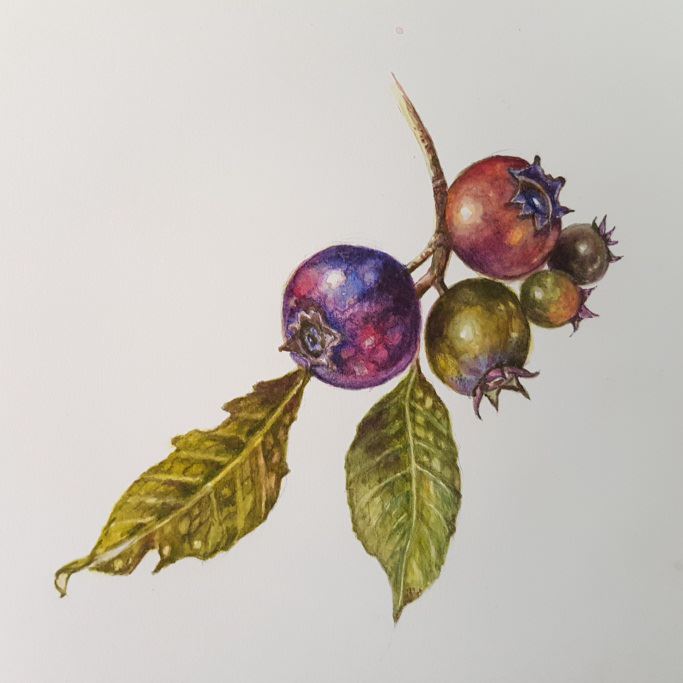
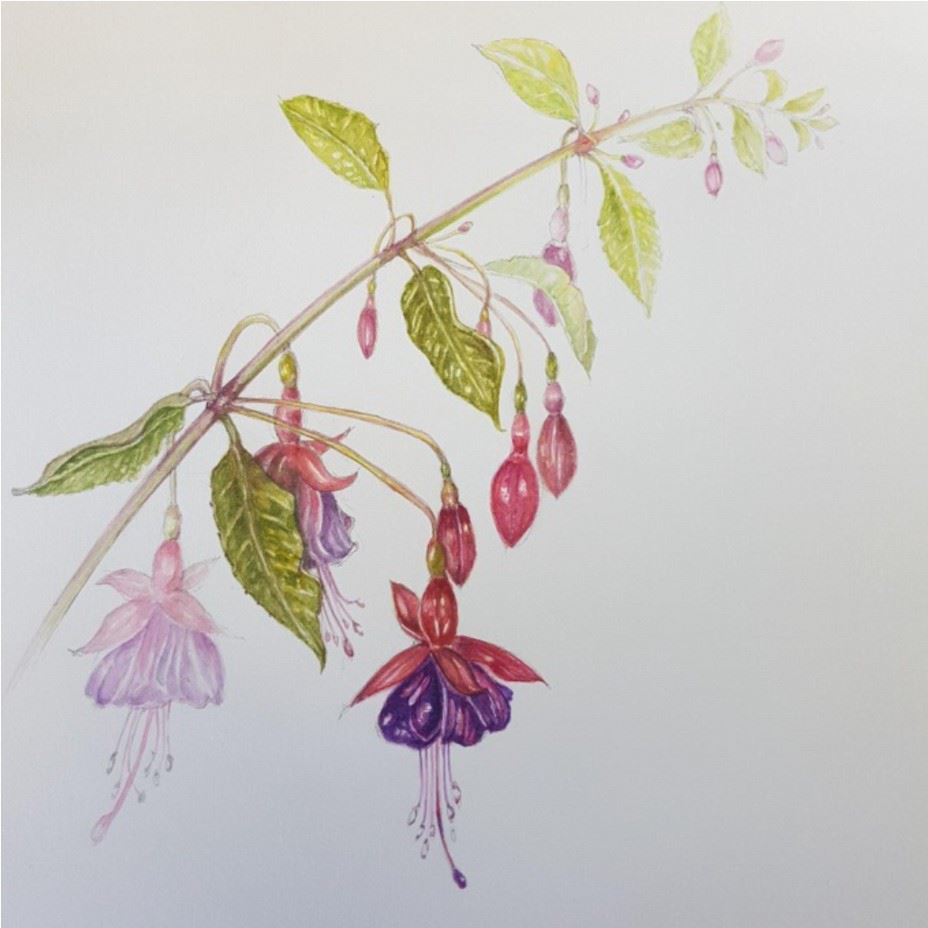
lovely blog Jenni and such awesome art work
Absolutely! Stunning paintings and lovely words! Thanks, David.